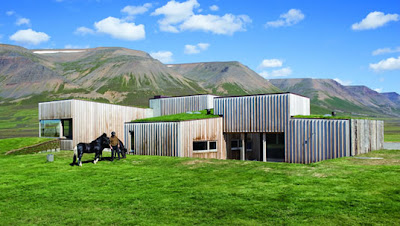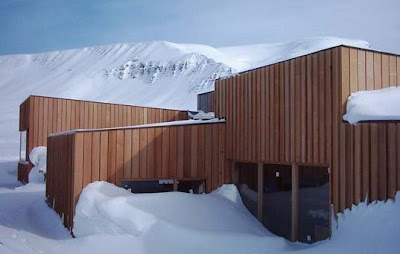Since day one, at least day one of human existence, we’ve looked to the stars and beyond, and in them we’ve found faith, dreams, inspiration, direction, and love. From our scriptures to NASA and from the moon to Mars, we’ve searched for answers about ourselves and things far greater. Unfortunately, with modern urbanization, and its corresponding light pollution, it has become increasingly difficult to enjoy space in all its glory.
This pollution is precisely why we’re thankful for the spectacular photos taken by such photographic astronomers as David Malin. He, along with Phaidon Press, has put out a book (Ancient Light: A Portrait of the Universe) that features a number of his black and white works and includes such cool things in space as star clusters, galaxies, nebulae, and much more.
For our purposes, we’ve gleaned five cool things in space from Malin’s book based on their proximity to Earth and their general popularity within human society (meaning you might have heard of the phenomenon).
5.Halley’s Comet
Distance from Earth: 0.000000474 light years (closest approach)
Many of us remember Halley’s Comet’s last approach in 1986, and if you were young at that time you may have yet another chance within your lifetime to see this phenomenon; the next scheduled passing is in 2061. Since Halley’s Comet’s first observation in 240 BC (and being recognized as a periodic comet -- arriving every 75 to 76 years -- in the 18th century), the ’86 passing was the least spectacular due to urban light pollution. In fact, the light pollution was so bad that many amateur astronomers were forced to travel to the southern hemisphere if they hoped to catch a glimpse of one of the most accessible cool things in space. Despite the handicaps provided by modern civilization for terrestrial-bound persons, space programs throughout the world literally reached for the sky as they sent a number of probes (nicknamed the Halley Armada) into space. These probes managed to capture the first images of Halley’s Comet’s nucleus and an ultraviolet space telescope helped Soviet scientists put together a model of Halley’s Comet.
What might surprise us the most is that while Halley’s Comet appears bright and shiny from our perspective on Earth, it’s actually black as coal and only reflects about 4% of the sun’s light. Another surprise is its small size; the nucleus of Halley’s Comet is only 15 kilometers long, 8 kilometers wide and about 8 kilometers thick, however, the coma stretches back about 100 kilometers.
4.The Helix Nebula

Distance from Earth: 700 light years
As the closest bright planetary nebulae to Earth, the Helix Nebula provides plenty of great photo ops from the Hubble telescope and other ground-based telescopes. The Helix Nebula, part of the Aquarius constellation, was first discovered around 1824 by Karl Ludwig Harding, but it wasn’t till about 2003 when this phenomenon received its “Eye of God” nickname. If this were truly the Eye of God, its proximity to us makes total sense since there aren’t many parents who don’t want to keep close tabs on their depraved children.
The Helix Nebula is named as such because, from our earthly position, it appears that we are looking down a helix, the shape of a cross-section of DNA. The Helix Nebula is a planetary nebula and its core will eventually become a white dwarf star. It’s also this central core that glows and causes the light show in the surrounding gases.

Distance from Earth: 7,000 light years
The Eagle Nebula is interesting not only because you can see its brightest star with a good pair of binoculars, but also because in 2007 scientists discovered evidence that led them to believe a nearby supernova destroyed the distinctive Pillars within the Eagle Nebula some 6,000 years ago; however, the light that will reveal the new shape won’t reach Earth for another 1,000 years.
Another interesting aspect of Eagle Nebula, which is part of the Serpens constellation and was discovered in 1745-’46 by Jean-Philip de Cheseaux, is the fact that there is a whole open cluster of bright blue stars being formed.
2.The Witch Head Nebula
Distance from Earth: 1,000 light years
The Witch Head Nebula, which looks like a right-facing profile of a witch, is located near what’s likely the most recognizable constellation to most people -- Orion. Although it’s officially a part of the Eridanus constellation, it is Orion’s Rigel star (located at the bottom right corner of Orion) that illuminates the Witch Head Nebula. The Witch Head Nebula appears blue due to the combination of Rigel’s blue color and the dust within the nebula’s cloud that reflects blue light better than red (it’s the same physical process that causes the Earth’s daytime sky to appear blue).
1.The Horsehead Nebula
Distance from Earth: 1,500 light years
Another space phenomenon found in the Orion constellation (to the right of the left-most star in Orion’s belt) is the Horsehead Nebula. First seen in 1888, the Horsehead Nebula is part of the Orion Molecular Cloud Complex and is a dark cloud of swirling dust that blocks the light from the bright red emission nebula behind it. Bringing the Horsehead Nebula down to Earth, South Park’s character, “Biggest Douche in the universe,” was from this randomly formed cloud.































